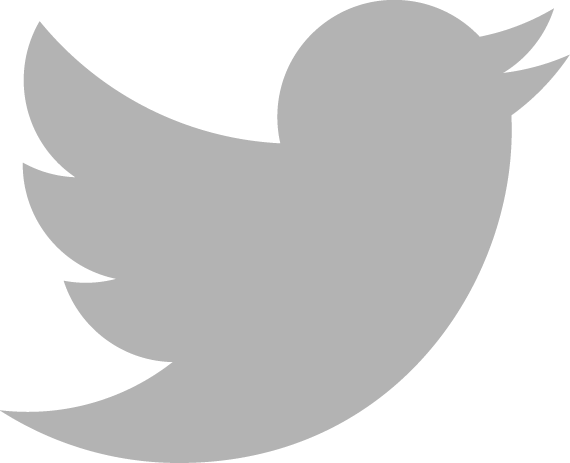…on how to get on board and succeed in tech as a woman-designer, how to design for a broad range of consumers, and how to bring a more diverse crowd of professionals into the tech industry
The range of consumers for modern products and services is more diverse than ever - but the tech industry itself, unfortunately, isn’t. We’ve asked 5 leading female design experts to share their knowledge of paving the way into innovative industries for other women to follow. Here’s what they had to say::
Empathy & Design Process
The new customer requires the new range of products -built for various types of users. In building products for those you’ve never met, it is important to learn a lot about how they live, and think beyond design and into impact that your product will have on people’s lives. When we design all these products or experiences it’s about seeing that difference we’re making - we’re not just making products that you use for two years and replace with a new one - that’s how landfills pile up with what industrial design used to be, until now. Now we want meaning - people want products that can change their lives, that they can recommend to others, to save lives, change societies, products that actually influence the way technologies adjust to the future.
We are designing into new dimensions where rules haven’t been made yet - diversity of personal and professional background is fundamental for creating a full range of experiences accessible for all and a safe space to experience together.
UX research should be on top of the funnel at all time. One of the challenges for design led companies is not just road mapping because we “need to build stuff,” but really accepting and embracing the nebulous parts of the user-centered research, and looking at items on the roadmap not just as “things we are going to build” but rather “assumptions we need to validate or not validate.”
There’s a workplace tendency for protected classes like women or people of color, or women of color especially - we get into a defensive mode. And we often forget that the thing that we always have to do as designers is practice empathy. We are used to doing it towards our users but often times we forget to do it towards the people we work with - our stakeholders, executives and teammates. Empathizing with people around you is very helpful as it opens a door for the opportunity to elevate yourself and your work to the CEO, your superiors and your peers.
Leading a startup
For consumer products, a product designer should be the first hire - and you should trust the process - even if it makes you go slowly. It pays off - you end up with a useful, beautiful and insightful product built with the user in mind. On top of that, having a polished website, deck, and social media when it comes to fundraising shows that your brand is committed to winning.
When you lead a design-driven startup (or you are an early design hire), you get to rethink what the new products and brands should be, and also what the new business models should be - you get to truly influence the industry and the relationship framework with all of its stakeholders: customers, providers, suppliers, and investors. You get to create a product that both lives up to both investor expectations and social impact duty - you get to combine those things and embrace a value-driven leadership.
Being a woman in tech gives you a lot of power as it gives you that competitive edge to be able to relate to more people.
Succeeding in tech and emerging industries
If you are job hunting, seek out design-led organizations because not all of them are. Seeking places where design is valued by the top executive level will help a lot. That is something that is typically quite public, but in addition, the design drive of an organization is visible right away through interviews - they help understand how fundamental the designer’s “say” is in the organization.
Say Yes to everything. Especially early on in your studies and career. Use as many opportunities to learn and explore the unknown as you can. Often for women in tech, we as designers are perceived in a specific way “you are a designer, you are good at colors and materials”. But you are good at other things too - for example, I am good at technical things and can argue with engineers, or I am good at public speaking for presenting our projects - yes, yes, yes.
Be a volunteer. Be seen and learn things - it will always help you to get into space, and then to stay fresh in it.
You have to really advocate for the work that you think is most important to the core process, even if sometimes you have to stand up to the CEO and his asks to design a sales deck. You have to defend the space that you need to do good design work. Most of the people kind of know what it is that you do, but actually they have no idea - they think you just squeeze out magic - educating them about your process and helping them understand that it is hard work helps. The irony is that with good design people often underestimate what it took to get there. If you don’t defend yourself, the key elements of the process you did not highlight will eventually erode your reputation. Don’t let people take your design for granted - it’s your duty to educate them about the process, for them and for you.
Finding time for yourself
It is important to find time for yourself and for people around you. Chances are, an incredible project can always come out of a fun dinner with a friend or a simple hobby. New skills that you learn will influence your professional growth, sometimes in unexpected ways. As a designer, exploration is a crucial part of our professional journey. Side projects and personal projects are extremely important because they help you set up a mind space for creativity.
Making time for yourself can be very freeing if you start to feel obligated to be creative outside of work - expanding your creative energy sometimes is a luxury you can’t afford. To help yourself, you can start with finding time to calm your mind, through giving yourself permission to not be creative at all times. There are other things you can focus on for the sake of your own growth - like becoming better at managing difficult conversations, getting some coaching or therapy, practicing meditation or taking up a new sport.
If there is something you would really like to do, make time for it - even on weekends. Do not beat yourself up if achieving consistency is challenging and your side projects last for months - personal projects are for you to be happy. They can pay you back in very unexpected ways, and sometimes long after they’ve ended. Just do your best not to give up easily and keep coming back to it.
Dealing with impostor syndrome
Feeling like an impostor means you are doing something new. You are in the beginning of your learning curve. As you are entering this new territory, asking for help is not shameful - you will get help. And next thing you know - you are no longer an impostor. Cultivating a culture of comradely and help is crucial for a design-driven organization.
It’s easy to feel like an impostor if you are different from other people in the room - trusting yourself through this journey gives you an unfair advantage as you embrace a unique point of view (as a woman, as a Millenial, as a minority, and so on).
As women and minorities in a white male-dominated industry, it may be tempting to only see the negative. But your outsider perspective is a strength once you learn to navigate the landscape. Have confidence in who you are and what you have to offer - and never apologize for yourself.
Thank you to the Women designing tech panel who shared their expertise with us:
Michelle Kim is Senior Product Designer @ JUUL Labs. Previously from FinTech, Healthcare, and gaming. Michelle is passionate about health, fitness, CBT, and dogs.
Maggie Connors is the Founder & CEO of besito, the world’s most beautiful cannabis vaporizer. Previously she worked in brand management at Pepsi, Starbucks, and Apple. She received her MBA from Stanford and a BA from Northwestern University and was a cannabis investor before starting besito.
Phnam Bagely is an Industrial Designer. She runs an agency called Nonfiction based in SF. Her job is to turn science-fiction into reality to create a better future for all.
Ericka Ames spent last 5 years @ Turo, currently in the Associate Creative Director role. Ericka is a multifaceted graphic designer specializing in print, identity, packaging, marketing, web, motion graphics, and UI.
Heather Gallagher is the Vice President of Product at Enklu, where she is helping to build a new digital canvas and ecosystem for the next era of creators and innovators. For 16 years prior to joining Enklu, Heather lead technology and design services for Burning Man, helping to grow an assemblage of outcast artists and creatives into a worldwide global cultural phenomenon.

